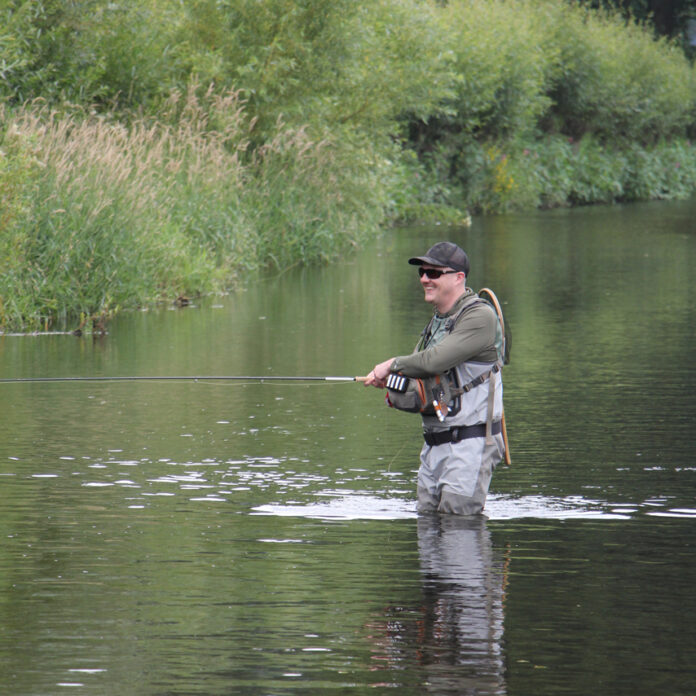[Interview starts at 48:58]
My guest this week is Steve Carew of Fulling Mill. Steve is the guy who gets fly patterns from an original sample to those gorgeous flies you see in the fly bins of your local Orvis store or dealer. How do commercial flies get made? Who are these people who tie flies for a living? Do they actually fish? How good are they? And how do they produce such consistent, high-quality flies in large volumes without sacrificing quality?
In the Fly Box, we have some helpful tips from listeners, as well as some interesting questions, including:
- A great tip on how to protect the tip of a fly rod when carrying it fully assembled inside a vehicle.
- How do I know what color midge to use? Are there seasons and times when different colors work better than others?
- I saw a carp feeding but tried a dozen flies and none of them worked. How can I catch these fish?
- I fish a lake with trout, bass, pike, walleye, and perch in it. How can I target each one of these fish?
- I am going to fish a lake and want to know what two fly lines I should take.
- Does the newer technology Orvis uses in its fly rods make older rods obsolete?
- I am fishing an older fiberglass rod and lost a bunch of fish. Do you think the rod is the problem?
- I fish an aqueduct with steep banks that prevent a back-cast. Do you have any suggestions on fly lines?
- A tip from a listener on gluing an aquarium thermometer to his net.
- Do you think the occasional flip of my fins when using a float tube will spook fish?
- Do you have any tips for mending a dry-dropper rig without moving the fly?
- What is Tom’s favorite fly to tie and favorite fly to fish?
- I purchased an old bamboo rod. How do I find out what line size it takes?
- I saw some brook trout actively working a redd. Does that mean I should quit fishing that stream entirely?

Credit: Source link






























